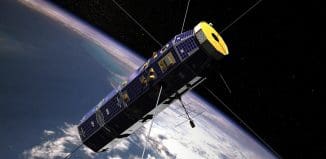Europe’s Nav-Sat System Receives Two More Satellites
This post is also available in:  עברית (Hebrew)
עברית (Hebrew)
While it’s true that most of us use GPS on a regular basis, it isn’t the only navigation system out there. Europe has it’s own rival to America’s GPS called the Galileo sat-nav system and this week it received a fresh pair of satellites which were launched to join a dozen already in space.
After a journey of nearly four hours, the 700-kilogramme satellites entered Earth orbit at an altitude of 23,522 kilometres.
“Named for the astronomer who pinpointed the Earth’s true position in the Solar System, the Galileo satellite navigation system that will help Europe find its way in the 21st century now has 14 satellites in orbit,” the European Space Agency (ESA) said.
Ultimately, the multi-billion-euro constellation named after the “father of modern science” is meant to comprise some 30 satellites, providing navigation and search-and-rescue services.
Another launch of four orbiters on a single rocket,scheduled for the end of the year, is expected to boost the constellation to 18, thus allowing for Galileo to start providing usable signals.
Gelileo’s developers say that the system is comprised of high-tech instruments more modern than that of the American GPS system, which means it can provide a more precise signal.
The space agency had initially hoped for early navigation services to be available from 2014, but earlier launches were plagued with delays and technical issues.
The launch of satellites five and six was delayed by more than a year due to technical difficulties, then number seven and eight were mislaunched. Although the ESA says the two satellites were since then moved to their position, their usefulness remains to be seen. Another satellite has developed antenna problems, and can now transmit only in one frequency.
Despite of this, the latest launch was successful and brings the system halfway to being complete.
12 more satellites are scheduled to be launched by 2020.




























